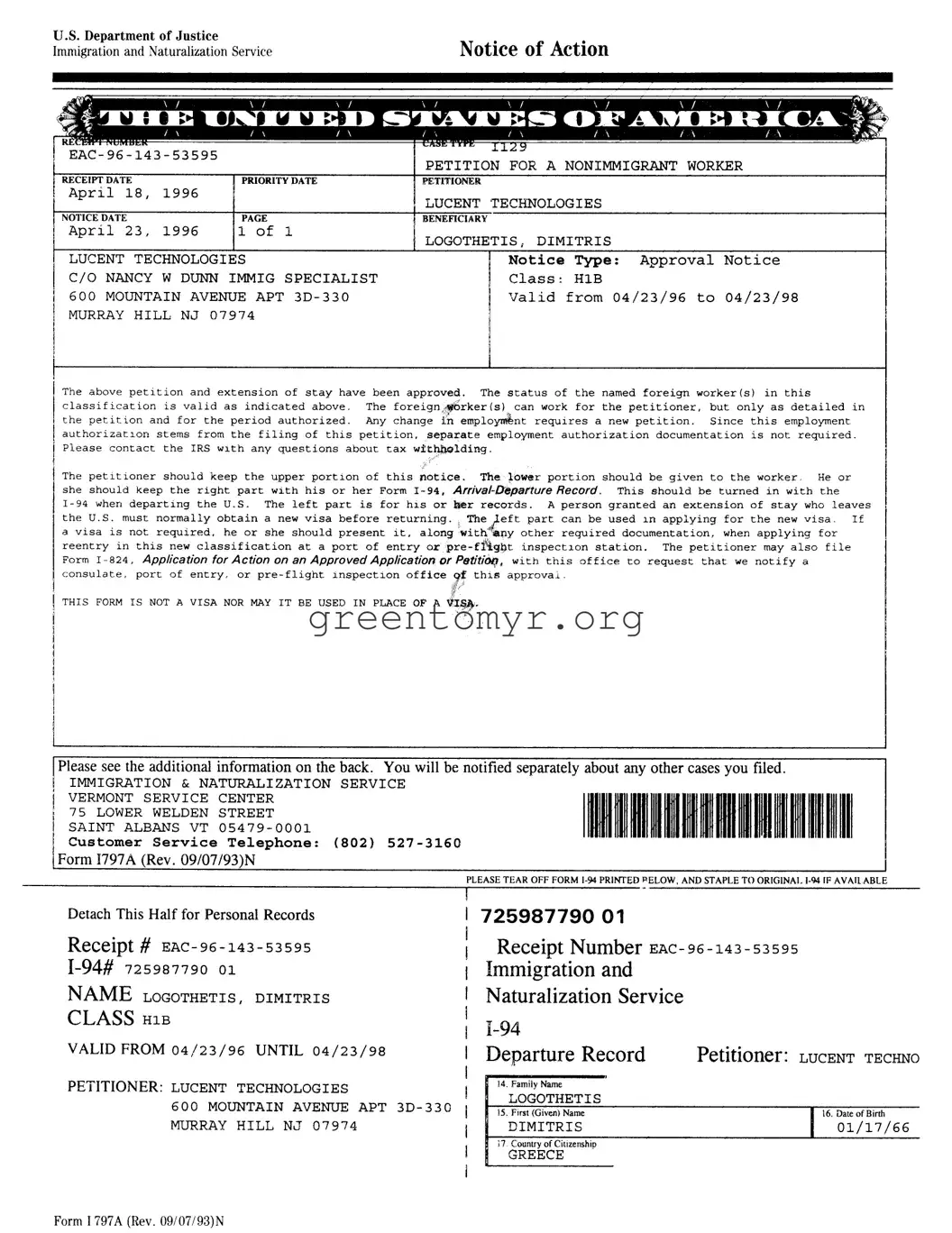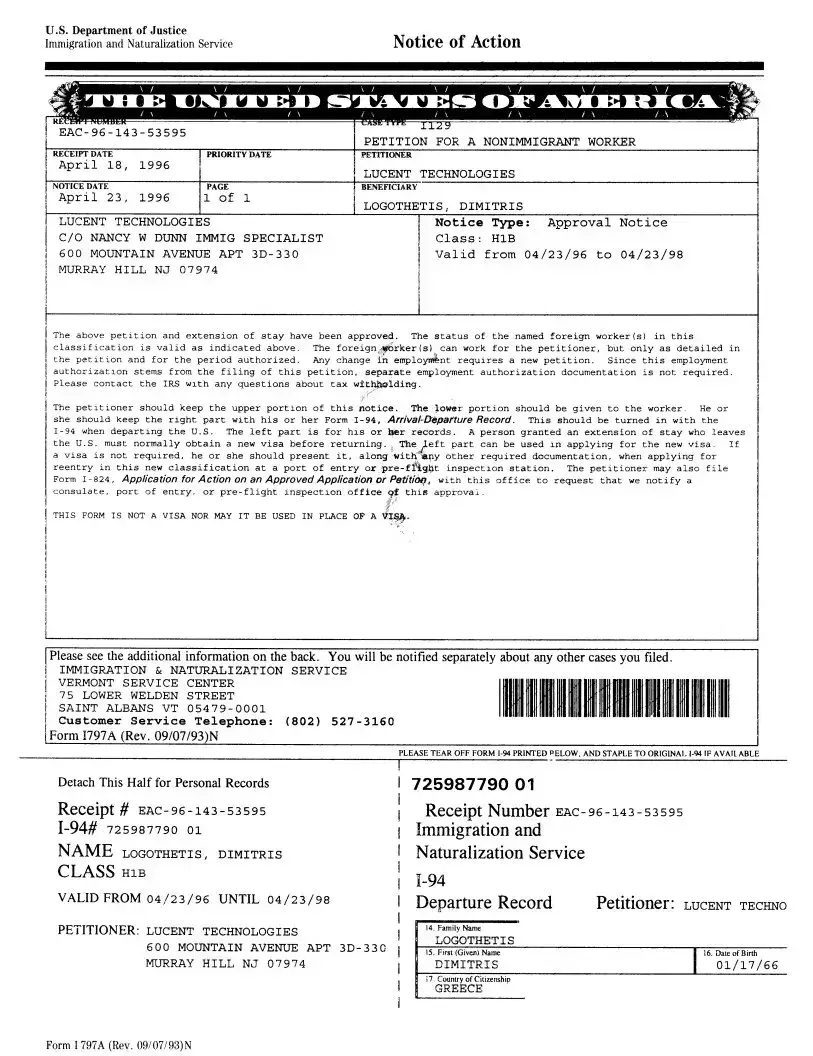The I-797A form, issued by the U.S. Department of Justice Immigration and Naturalization Service, serves as a critical document for nonimmigrant workers in the United States. This approval notice confirms that a petition for a nonimmigrant worker has been granted, allowing the beneficiary to work legally for the specified petitioner during the authorized period. It includes important information such as the receipt date, notice date, priority date, and relevant details about the beneficiary and the petitioner, as well as the classification of the visa granted. For example, the I-797A reflects the approval of a petition for H-1B status, which is a common work visa for specialized occupations. The form not only acknowledges the validity of the worker's status but also outlines the requirements for employment, noting that any change in employment necessitates a new petition. Furthermore, the I-797A includes instructions for both the petitioner and the worker about documentation retention and compliance with U.S. immigration regulations. Notably, it clarifies that this notice is not a visa, emphasizing its role strictly as verification of petition approval and employment authorization. Presenting it during travel may also facilitate reentry into the United States, should the need arise. Overall, the I-797A form is essential for maintaining lawful status and employment for foreign workers in the U.S.

